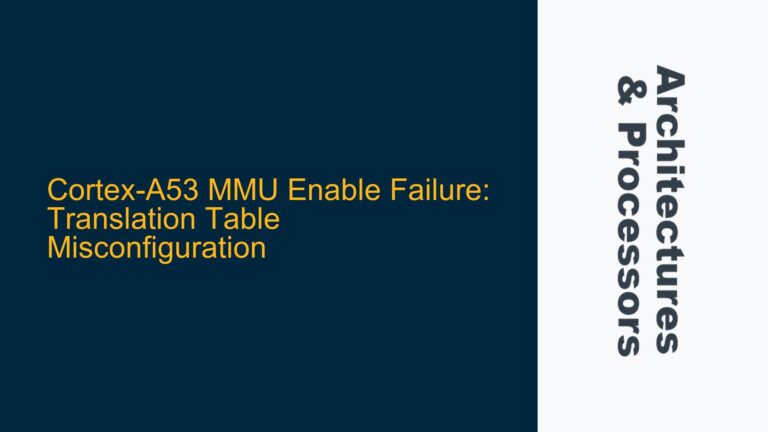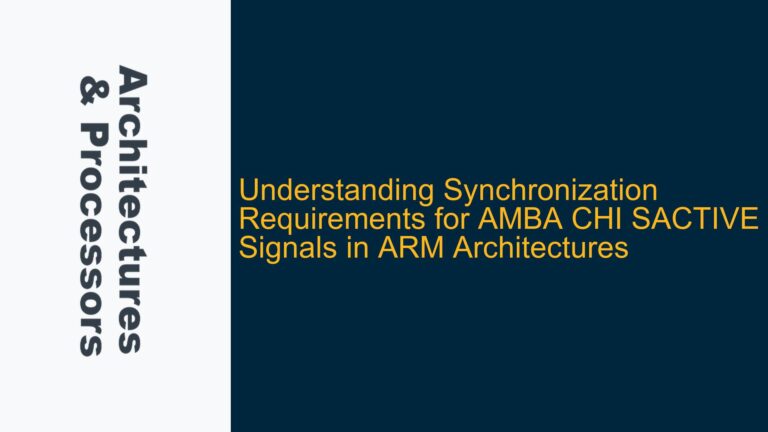AXI Write Data Preceding Write Address: The Realignment Challenge
In the ARM AMBA AXI protocol, one of the most nuanced aspects of the write transaction mechanism is the potential for write data (W channel) to precede the corresponding write address (AW channel). This scenario, while permitted by the protocol, introduces a significant challenge for the interconnect design. The interconnect must ensure that write data is only delivered to the intended subordinate (slave) device, even when the address information arrives later. This requirement necessitates a "realignment" process, which is often misunderstood or overlooked during initial design and verification phases.
The realignment process is not about spatial realignment of data or address bits but rather a temporal realignment. The interconnect must buffer or stall the write data until the address information is available, ensuring that the data is only presented to the correct subordinate. This mechanism is critical to maintaining protocol compliance and preventing data corruption or unintended writes to incorrect memory regions.
The confusion often arises from the assumption that the AXI protocol strictly enforces a sequential relationship between the AW and W channels. However, the protocol explicitly allows for out-of-order transactions, including the possibility of write data appearing before the corresponding address. This flexibility is designed to optimize performance by decoupling the address and data phases, but it places additional complexity on the interconnect to manage these transactions correctly.
Interconnect Stalling and Buffering Mechanisms for Temporal Realignment
The primary cause of the realignment requirement stems from the AXI protocol’s decoupled nature. The AW and W channels operate independently, allowing masters to issue write data without waiting for the address to be fully processed. This decoupling can lead to scenarios where the interconnect receives write data before it has determined the destination address space. In such cases, the interconnect must implement mechanisms to handle this temporal misalignment.
One common approach is to use buffering within the interconnect. When write data arrives before the corresponding address, the interconnect stores the data in a buffer until the address information is available. Once the address is received, the interconnect can forward the buffered data to the correct subordinate. This buffering mechanism ensures that write data is only delivered to the intended target, maintaining protocol integrity.
Another approach is to stall the write data channel by deasserting the WREADY signal. By holding WREADY low, the interconnect effectively pauses the transfer of write data until the address information is available. This stalling mechanism is simpler to implement than buffering but can impact performance, as it introduces latency into the write transaction.
The choice between buffering and stalling depends on the specific requirements of the system. Buffering offers higher performance by allowing the master to continue issuing write data without waiting for the address, but it requires additional hardware resources. Stalling, on the other hand, is more resource-efficient but can degrade system performance due to increased latency.
Implementing and Verifying AXI Write Realignment in Interconnect Designs
To address the realignment challenge, designers must carefully implement and verify the interconnect’s handling of write transactions. The following steps outline a systematic approach to ensuring correct realignment behavior:
Step 1: Define Realignment Requirements in the Interconnect Specification
The first step is to clearly define the realignment requirements in the interconnect specification. This includes specifying whether the interconnect will use buffering, stalling, or a combination of both to handle write data that precedes the address. The specification should also define the maximum buffer depth and the conditions under which stalling will occur.
Step 2: Implement Buffering and Stalling Mechanisms in RTL
Once the requirements are defined, the next step is to implement the buffering and stalling mechanisms in the RTL design of the interconnect. For buffering, this involves designing FIFOs or other storage structures to hold write data until the address is available. For stalling, the design must include logic to control the WREADY signal based on the availability of address information.
Step 3: Develop Verification Testbenches to Cover Realignment Scenarios
Verification is critical to ensuring that the realignment mechanisms work as intended. The verification testbench should include scenarios where write data precedes the address, as well as cases where the address arrives first. The testbench should also cover corner cases, such as back-to-back write transactions with varying data and address arrival times.
Step 4: Use Assertions to Monitor Realignment Behavior
Assertions can be used to monitor the realignment behavior during simulation. For example, an assertion can check that write data is only delivered to the correct subordinate after the address is available. Assertions provide a powerful tool for detecting protocol violations and ensuring that the realignment mechanisms are functioning correctly.
Step 5: Perform Performance Analysis to Evaluate Realignment Impact
Finally, it is important to evaluate the performance impact of the realignment mechanisms. This includes analyzing the latency introduced by stalling and the resource utilization of buffering. Performance analysis can help identify potential bottlenecks and guide optimizations to improve system throughput.
Example: Realignment Implementation in an AXI Interconnect
Consider an AXI interconnect that uses buffering to handle write data that precedes the address. The interconnect includes a set of FIFOs, one for each master, to store write data until the address is available. When write data arrives, it is stored in the corresponding FIFO. Once the address is received, the interconnect reads the data from the FIFO and forwards it to the correct subordinate.
The following table summarizes the key signals and their roles in the realignment process:
| Signal | Description |
|---|---|
| AWVALID | Indicates that the address on the AW channel is valid. |
| WVALID | Indicates that the data on the W channel is valid. |
| WREADY | Indicates that the subordinate is ready to accept write data. |
| FIFO_WRITE | Control signal to write data into the FIFO. |
| FIFO_READ | Control signal to read data from the FIFO. |
| FIFO_FULL | Indicates that the FIFO is full and cannot accept more data. |
| FIFO_EMPTY | Indicates that the FIFO is empty and has no data to read. |
Verification Strategy for Realignment
The verification strategy for realignment should include the following steps:
-
Test Case Generation: Create test cases that cover all possible scenarios of write data and address arrival sequences. This includes cases where write data arrives before, after, or simultaneously with the address.
-
Protocol Compliance Checks: Use assertions to verify that the interconnect adheres to the AXI protocol during realignment. This includes checking that write data is only delivered to the correct subordinate after the address is available.
-
Corner Case Testing: Test extreme scenarios, such as maximum buffer depth, back-to-back transactions, and high-frequency write bursts, to ensure that the interconnect handles these cases correctly.
-
Performance Metrics: Measure the latency and throughput of write transactions to evaluate the impact of realignment on system performance. This includes analyzing the effects of stalling and buffering on transaction completion times.
By following these steps, designers can ensure that their AXI interconnect correctly handles the realignment of write data and address transactions, maintaining protocol compliance and optimizing system performance.






